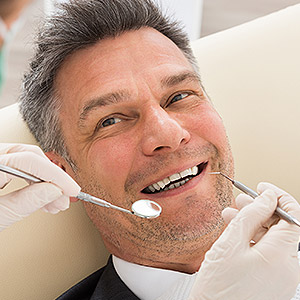For several decades, dentists have been saving teeth from tooth decay following a few basic guidelines: 1) Identify decay as soon as possible; 2) Thoroughly remove decayed tooth structure, and 3) Fill any cavities. With millions of diseased teeth rescued, observing these simple steps have proven a rousing success.
But as with most things, even this successful protocol isn’t perfect. For one, some healthy tissue gets removed along with the diseased portions. The average percentage of “collateral damage” has dropped over the years, but it still happens—and a reduction in healthy tissue can make a tooth less structurally sound.
Another drawback, at least from the patient’s perspective, is the dental drill used for removing decay and preparing cavities for filling. Many people find drilling unpleasant, whether from its vibrations in the mouth or its high-pitched whine. The drill’s burr head design also contributes to greater healthy tissue loss.
But those weaknesses have lessened over the last few years, thanks to innovations on a number of fronts.
Better risk management. Tooth decay doesn’t occur out of thin air—it arises out of risk factors unique to an individual patient like personal hygiene, bacterial load, saliva production or even genetics. Taking the time to identify a patient’s “tooth decay risk score” can lead to customized treatments and practices that can minimize the occurrence of decay.
Earlier detection. Like other aspects of dental health, the sooner we detect decay, the less damage it causes and the more successful our treatment. X-rays remain the workhorse for detecting decay, but now with improvements like digital film and better equipment. We’re also using newer technologies like laser fluorescence and infrared technology that can “see” decay that might otherwise go undetected.
Less invasive treatment. The dental drill is now being used less with the advent of air abrasion technology. Air abrasion utilizes a concentrated spray of particles to remove diseased tooth structure more precisely than drilling. That means less healthy tissue loss—and a more pleasant (and quieter!) experience for the patient.
In effect, “less is more” could describe these improvements to traditional decay treatment. They and other methods promise healthier teeth and happier patients.
If you would like more information on current treatments for tooth decay, please contact us at (860) 889-6445.

